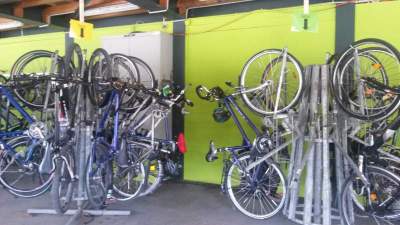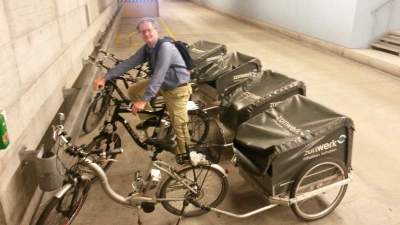CIVINETs explore mobility best practice in Swiss cities

On 12 and 13 May, 17 members of the CIVINET Slovenia-Croatia and CIVINET Czech and Slovak Republics took part in a study visit to see best practices in sustainable urban mobility in the Swiss cities of Zurich and Luzern.
CIVINETs explore mobility best practice in Swiss cities
On 12 and 13 May, 17 members of the CIVINET Slovenia-Croatia and CIVINET Czech and Slovak Republics took part in a study visit to see best practices in sustainable urban mobility in the Swiss cities of Zurich and Luzern.
Participants began their tour at Zurich’s central train station on 12 May, where almost 4000 international, national, and local trains transport about 400 000 passengers to and from the city every day. The philosophy and design of the Swiss railway system makes it the most important public transport network in the country, permitting travel to the majority of locations without using a private car.
In the afternoon participants had a guided tour of Sihlcity, Zurich’s largest shopping centre. Reducing private car use for shopping trips is promoted, and good accessibility for alternative modes of transport and deliveries is available. While there is a limited amount of parking, good connections by train, tram, and bus make driving less attractive. Furthermore, certain goods can be delivered by electric bicycle, a service offered by a local foundation that works to improve job opportunities for the long-term unemployed in the city.
The following day, participants learned about Zurich’s current mobility policies, measures and continuing challenges. The city aims to reduce the modal share of private motorised transport to 27 percent by 2025, as set out in its Sustainable Urban Transport Plan. For this to be achieved, substantial investments are required for the expansion and improvement of public transport and the cycle network in the city and surrounding region. Presentations were also given on Zurich’s parking policy and the city’s mobility management plan.
Some participants also travelled to the nearby city of Luzern, where they observed how the train station is the city’s multimodal hub, offering opportunities for travel by bus and public bicycles. Luzern’s city centre is closed to car traffic, and on other streets good-quality cycle lanes and priority for cyclists is the norm.
Participants were impressed by how well the transport systems in both cities function, helping to reduce barriers to using public transport. “The most interesting [aspect] for me was the organisation of public transport in terms of regulation, accessibility, smooth operation and frequency in all parts of the city. In such a place, the use of public transport can be a pleasure as well as a way to travel. This is one thing that Ljubljana really needs to improve,” said Matija Repina from BTC City, a shopping and entertainment centre in the Slovenian capital.
View a selection of photos from the study tour below.



Author: By Andrej Klemenc and Lidija Pavic-Rogosic







